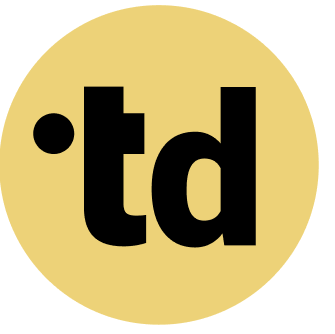Key Takeaways
Workload planning is the strategic distribution of tasks to balance team capacity and prevent burnout, which affects 45% of European workers.
Clear roles and responsibilities, a core outcome of workload planning, can boost team performance by 25% and make employees 53% more efficient.
In hybrid teams, AI integration can automate up to 45% of repetitive tasks, making workload planning essential for managing human and bot collaboration.
Welcome, Team Architects, to the new era of strategic team design. The old ways of managing tasks are broken, leading to burnout for 45 percent of European workers. This is your playbook for understanding the true definition of workload planning, a process that goes beyond simple task lists. We will explore how to distribute work effectively, integrate hybrid teams of humans and AI, and use clarity as your ultimate tool. It's time to make bots and humans click and build teams that win.
Practical Framework for Team Architects
As a Team Architect, you can apply these principles to your organization:
- Map Current State: Document existing roles and responsibilities using a tool like teamdecoder.
- Identify Gaps: Where are roles unclear? Where do humans and AI agents overlap?
- Define Clear Boundaries: Specify which tasks are handled by humans vs. AI agents.
- Create Accountability: Assign clear decision rights for each role.
- Iterate and Improve: Continuously refine based on team feedback.
Sweet Teams Are Made of This: A Clear Definition
Workload planning is the strategic process of distributing tasks and resources across your team to maximize efficiency and well-being. It's not just a to-do list; it's a long-term vision for balancing capacity with project goals. Effective planning ensures that the right person, with the right skills, gets the right task at the right time. This clarity boosts individual performance by up to a significant portion. Proper workload planning transforms your team's structure from a source of stress into a strategic asset. This proactive approach sets the stage for sustainable growth and organizational development.
The High Cost of Unplanned Work
Ignoring workload planning creates chaos, and the numbers are stark. A staggering many European employees suffer from excessive work-related stress. This directly impacts the bottom line, as disengaged employees cost the German economy a potential 100 billion Euros annually. Without clear roles, teams waste countless hours on duplicated efforts and miscommunication. This lack of structure is a primary driver of burnout, a crisis that most professionals feel their employers ignore. You can learn more about what is workload management to combat this. This reactive environment makes it impossible to achieve strategic goals.
Architect Insight: Your Playbook for Clarity
For Team Architects, effective workload planning is a repeatable process, not a one-time fix. It begins with making roles and responsibilities transparent for Many people. Our Playful Tip: Start with a 'Purpose Tree' to connect every single task to your company's core mission. This simple act can make employees a significant number of more efficient. Deep Dive: A well-defined plan requires a clear framework. Here is a simple checklist to get started:
- Assess your team's total capacity, accounting for meetings and admin time (typically 20 percent).
- Break down large projects into smaller, manageable tasks, each under eight hours.
- Assign tasks based on skills and current workload, aiming for a 70-80 percent utilization rate to avoid burnout.
- Set realistic deadlines and track progress with a shared tool for the vast majority of visibility.
- Regularly review and adjust the plan in weekly check-ins, which many hybrid workers find effective.
This structured approach is central to successful workload planning techniques. It builds a resilient team ready for any challenge.
Hybrid Harmony: Make Bots and Humans Click
In modern team structures, workload planning must account for hybrid collaboration between humans and AI. AI agents can automate up to a significant number of repetitive tasks, freeing up your team for creative and strategic work. The key is strategic AI agent integration, not just replacement. This human-in-the-loop model requires a dynamic approach to defining roles and responsibilities. You can try teamdecoder for free to manage this new dynamic. For example, a marketing team can use an AI to analyze data for 15 different campaigns, while human strategists focus on creative direction. This creates a powerful partnership for scaling your team's output. Explore more about team workload planning in a single tool. This synergy is the future of high-performance teams.
From Planning to Performance: Scaling Your Organization
A clear definition of workload planning is the cornerstone of effective organizational development. It provides the data needed to make smart decisions about hiring, training, and resource all By understanding your team's capacity and skills, you can forecast future needs with over the vast majority of accuracy.ccuracy. This is how you scale roles from day one without creating chaos. Companies that master this see a a portion of improvement in operating income due to higher engagement. This process turns your team's structure into a flexible, agile asset ready for change management. It's the engine that drives sustainable growth and strategy operationalization. You can find templates to help with workload capacity planning. This strategic foresight is what separates good teams from great ones.
More Links
Federal Ministry of Labour and Social Affairs provides information regarding the German Working Time Act.
Federal Statistical Office (Destatis) offers content on the topic of work and the labor market in Germany.
German Society for Personnel Management (DGFP) features various publications relevant to HR and personnel management.
German Society for Personnel Management (DGFP) presents a study on the state of HR in 2025.
Fraunhofer Institute for Industrial Engineering IAO publishes studies from 2022 on various industrial engineering topics.
IBM offers insights and resources on workload management.
DGSF provides a PDF document detailing concepts, methods, and evaluation in organizational development.
Bertelsmann Foundation offers a publication exploring the future of work in 2050.
FAQ
What is the best first step in workload planning?
The best first step is to get a complete and accurate picture of your team's current workload and capacity. This involves listing all ongoing and upcoming projects, breaking them down into tasks, and understanding each team member's available hours after accounting for meetings and administrative work.
How can software help with workload planning?
Software like teamdecoder helps by automating the process of tracking tasks, visualizing workloads, and identifying who is over or under capacity. It provides a central, real-time view of all work, which makes it easier to assign tasks, adjust schedules, and manage resources, especially in complex hybrid teams.
How often should a workload plan be reviewed?
A workload plan should be a living document. It's best to review it weekly in team check-ins to adjust for new tasks, shifting priorities, and unexpected roadblocks. For long-term projects, a higher-level monthly or quarterly review is also recommended to ensure alignment with strategic goals.
How does workload planning relate to organizational development?
Workload planning is a key tool for organizational development because it provides the data needed to design effective team structures, identify skill gaps, and plan for future growth. It helps create agile, resilient teams that can adapt to change without becoming overwhelmed.





